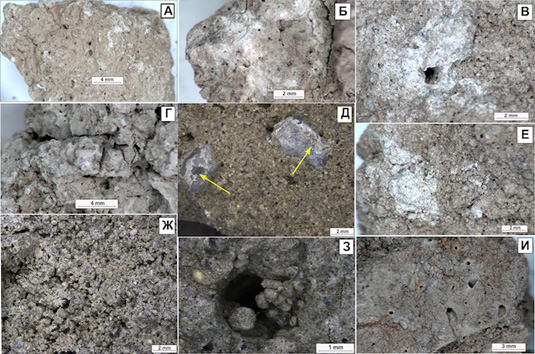Soils of the Kuchuk-Kulunda lakeside landscapes (Altai Krai): morphology, salinization, taxonomic attribution
DOI:
https://doi.org/10.31251/pos.v8i3.313Keywords:
Kulunda steppe; southern chernozems; Protocalcic Chernozems; Kastanozems; Luvic Greyzemic Chernozems; impregnating carbonates; shelterbelts.Abstract
The aim of the study was to identify the features of soil formation in the Kuchuk-Kulunda landscapes, highlighting common provincial features and those associated with the influence of local lithological-geomorphological and geochemical conditions.
Location and time of the study. Steppe and dry steppe soil zones of West Siberia, Kulunda steppe, Altai Region, Russia. Field research was conducted in 2020–2021.
Methods. Morphological features (macro- and mesolevel) important for diagnostics of carbonate forms, solonetz process, salinization and lithological features of soils were studied. Salinity attributes, exchangeable bases, carbonate content, organic matter and particle-size analysis were determined.
Results. When examining the soils of the Kuchuk-Kulundinsky lakeside landscapes, it was revealed that chernozems (Protocalcic Chernozems) belong to the Cis-Altai steppe province, chestnut soils (Kastanozems) belong to the Cis-Altai dry steppe province, and Solonchaks are formed in river deltas and depressions with closely located groundwater. The soils are formed on strata lacustrine-alluvial deposits with a high proportion of dust fraction in the particle-size distribution and heterogeneity in the content of sand fraction. Characteristic features of chernozems are the small thickness of humus horizons and the prevalence of dispersed forms of carbonates. This is confirmed by a number of published data about the morphological structure of West Siberian chernozems. In chestnut soils on the terraces of the basins of the lakes Kuchuk and Kulundinskoye, the well-formed carbonate neoformations like nodules are also absent; carbonate neoformations in the form of impregnation and diffuse spots are common. Chernozems and chestnut soils of the Kuchuk-Kulundinsky landscapes belong to solonetzic and saline subtypes with a strong and very strong degree of salinization. The accumulative salt horizon is located in the middle part of the soil profiles. The ion-salt composition is dominated by sulfates and sodium. In the chemistry of chernozems salinization, the participation of soda is expressed more strongly than in the chestnut soils. In solonetzic soils, the exchangeable sodium and magnesium percentage is very high. Soils under shelterbelts have a higher content of organic matter, are more deeply leached of carbonates and contain virtually no water-soluble salts.
Conclusions. Provincial soil features include a thin humus profile and dispersed forms of carbonate neoformations. The influence of geomorphological and lithological-geochemical conditions of lakeside landscapes consists in the distribution of saline and solonetzic varieties. High carbonate content, salinity, lithic discontinuity and specific hydrothermal regime of deeply frozen soils determine the structure of the middle and lower horizons of the profile. Under the forest shelterbelts, Luvic Greyzemic Chernozems are formed, non-saline and significantly leached of carbonates.
Downloads

Downloads
Published
How to Cite
Issue
Section
License
Copyright (c) 2025 The Journal of Soils and Environment

This work is licensed under a Creative Commons Attribution 4.0 International License.






